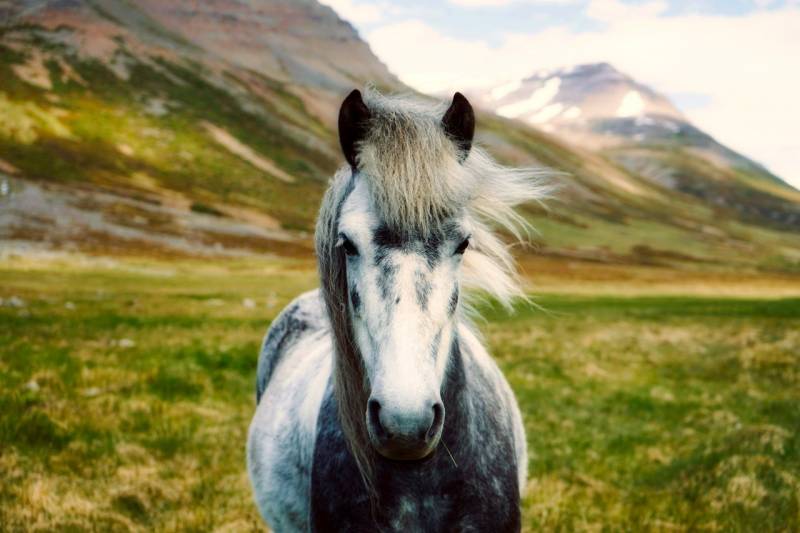Quick Navigation
When it comes to dying horse hair, the internet is well-stocked with contradictory opinions.
Some regard it to be a fun and exciting activity. Others are against using any sort of chemical on their beloved horse.

If you are also thinking about dying your horse hair and are a little confused about whether to do it or not, we are here to answer your queries.
Read the article to know whether dying horse hair is a good or bad idea.
What is the proper method of dyeing horse hair?
Is It A Good Idea To Dye Horse Hair?
Generally speaking, dying animals’ hair is commonly practiced by many.
People not only dye pet birds, and small animals but also dye big pets like cows, sheep, goats, and horses.
There are two types of dyes used for coloring horse hair:
- Metallic (inorganic pigments)
- Non-metallic (organic dyes)
Metallic or inorganic dyes are made up of harmful and intense chemicals, but they are long-lasting or permanent.
Whereas non-metallic or organic dyes are made up of natural and safe products but are temporary and animal-friendly.
Human dyes should not be used for dying horse hair as there are companies that are manufacturing animal-friendly hair dyes.
Hence only those dyes should be used.
What Do Experts Recommend?
Vets and other animal experts do not recommend dying horse hair if the process uses any harmful chemicals.
It is a bad idea if the person is unaware of the quality of dyes and the extent of harm these dyes may cause to an innocent horse.
The animal may get serious allergic reactions on the skin.
Therefore, think twice before you decide to dye your horse hair.
Non-metallic or organic dyes can be used to color horse hair without any hesitation.
It should be made sure that the person must be experienced, and all the precautionary measures must have been taken before starting the dying process.
Down below, we’ve prepared a thorough guide on how to dye horse hair safely.
Steps To Dye Horsehair:
We don’t always recommend dying a horse’s coat as there is a chance it will end up causing your horse a serious allergic reaction.
However, you can apply small patches or thin coats. It might be too much to handle the whole horse at once.
Dyeing the hair can be very effective at removing white spots or light spots.
The guide below is more or less about dying horse tail hair, or in some breeds, dying horse’s mane.
Things You Will Need:
- Hairbrush
- A Detangling Cream
- Scissor or Clippers
- Water Spray Bottle
- Hair Dye (Preferably Horse-Friendly Dye)
- Hair Dye Coloring Kit (Optional)
- Plastic Sheet
- Gloves
- Vet Wraps
- Shampoo
- Conditioner
- A Piece of Cloth

Step One: Brush The Hair To Detangle Them:
First, detangle the horsehair. The hairiest areas of a horse’s body are its head, mane, and tail which need the most effort.
You can use good quality and strong hair brushes to detangle the hair.
To make this step easy and less time-consuming, make use of detangling cream.
These creams make the hair silky and smooth so that brushing and combing can easily be done in a short time with less effort.
If hairs are not brushed and detangled, they may create disturbance in smooth dying and can cause problems later on.
Step Two: Trim The Hair (Optional):
In case the hair is too long, trimming is the way to get the desired length.
The trimming process involves cutting the unwanted length of hair to do the dying process in a better way.
Extra-length and unwanted hairs consume more color mixture and do not look neat.
Mostly there are two methods that groomers used to trim animal hair.
Scissor Method:
The most widely used method is the scissors method.
Groomers used sharp razor scissors to trim the horsehair because horsehair strands are mostly very thick to cut.
Before starting, spray water on the hair with the help of a spray bottle and comb them neatly.
Slightly wet hair makes the trimming process easy and less time-consuming as compared to dry hair.
You can start cutting the hair gradually till you achieved the desired length but avoid cutting too much length at once.
Clipping Method:
Another tool commonly used for trimming horsehair is a clipper.
It is an electronic and chargeable device, having blades fitted in it.
Clipper takes less time to trim the hair as compared to scissors, and its usage is straightforward.
It helps in tiding the difficult parts of the horse’s body, such as the head and the area around the legs.
Before you turn it on, make sure that you properly oiled the blades and are in a working position.
If blades are old or rusted, you should change them before starting the trimming process for uninterrupted working.
For removing the hair, turn on the clipper and start trimming the hair in the direction of the horsehair.
Recommended Product For Clipping Method: Wahl Professional Animal Stainless Steel Detachable-style Clippers
Step Three: Apply The Dye Color You Want:
Before applying the color dye, it should be ensured that the horse’s body is completely clean and dry and that there is no trimmed hair attached.
Choose a hair dye of your own choice and make the mixture in a bucket.
It is better to wear gloves to avoid contact with the skin as some dye may leave on your hands as well.
Dip the dying brush into the color mixture and thoroughly apply it.
Start from the roots, either on the whole body or on a few desired areas.
Make sure that you evenly applied the color and that there are no light or dark uneven patches.
You should also cover those areas like legs and hooves which do not need to be dyed with vet wraps.
Step Four: Wrap The Horsehair With A Plastic Bag:
For better penetration of the dye color into the hair strands, wrap them with a big plastic sheet.
The plastic sheet entraps the heat of the animal’s body which reacts with the dye to give vibrant results and even-toned color.
Leave it for 20 – 30 minutes and let it get dry.
Step Five: Rinse The Dye With Shampoo And Water:
After the color dries out, remove the wrapped plastic bag.
Wash the horsehair with a good quality shampoo until the hair dye rinses off and the water runs clear.
This can help to spread the color and make the dye easier to remove.
Step Six: Apply A Generous Amount Of Conditioner:
When shampoo completely rinses off, use a good quality conditioner on the wet hair.
Conditioners give a smooth texture to horse hair. Leave it for 2 to 5 minutes and rinse it off with water.
Horsehair absorbs water slowly since it’s a protein fiber.
Thus, use a big piece of cloth to completely dry the horse’s body to see the outcomes of this procedure.
Dying Horse Hair – The Takeaway
Dying horse hair with inorganic hair dyes may cause an allergic reaction.
However, you can use some organic hair dyes to color your horse hair.
You should do a patch test as recommended.
Use a little amount of dye on a horse to see if it causes any allergic reaction.
If your hose doesn’t react after a couple of minutes, you are good to go.
While dying your horsetail or mane, make sure your horse is not feeling uncomfortable.

A passionate content creator on pet behavior, nutrition choices, and health, Mike is an experienced pet expert. He has been writing on multiple websites to compensate for his passion for cats. Mike grieves around plenty of pets in his parents’ house. At the start of his career, he had a sturdy intention to be a part of pet care by any means.
With his affiliation to Purrfect n’ Pawesome, he found a way to satiate his craving to participate in pet health, wellness, and behavior analysis. He has been a significant part of our team and a major contributor in equipping our site with useful, authentic, and research-backed articles.
“I love pets as much as I love to travel to explore multiple places and lifestyles. I have been attached to this pawsome platform for many years, and my experience regarding pets has enhanced significantly by using various devices to write articles. I believe in writing my thoughts and experiences, so I try to write down the experience and learnings for my readers no matter where I am and what my mood is.”





